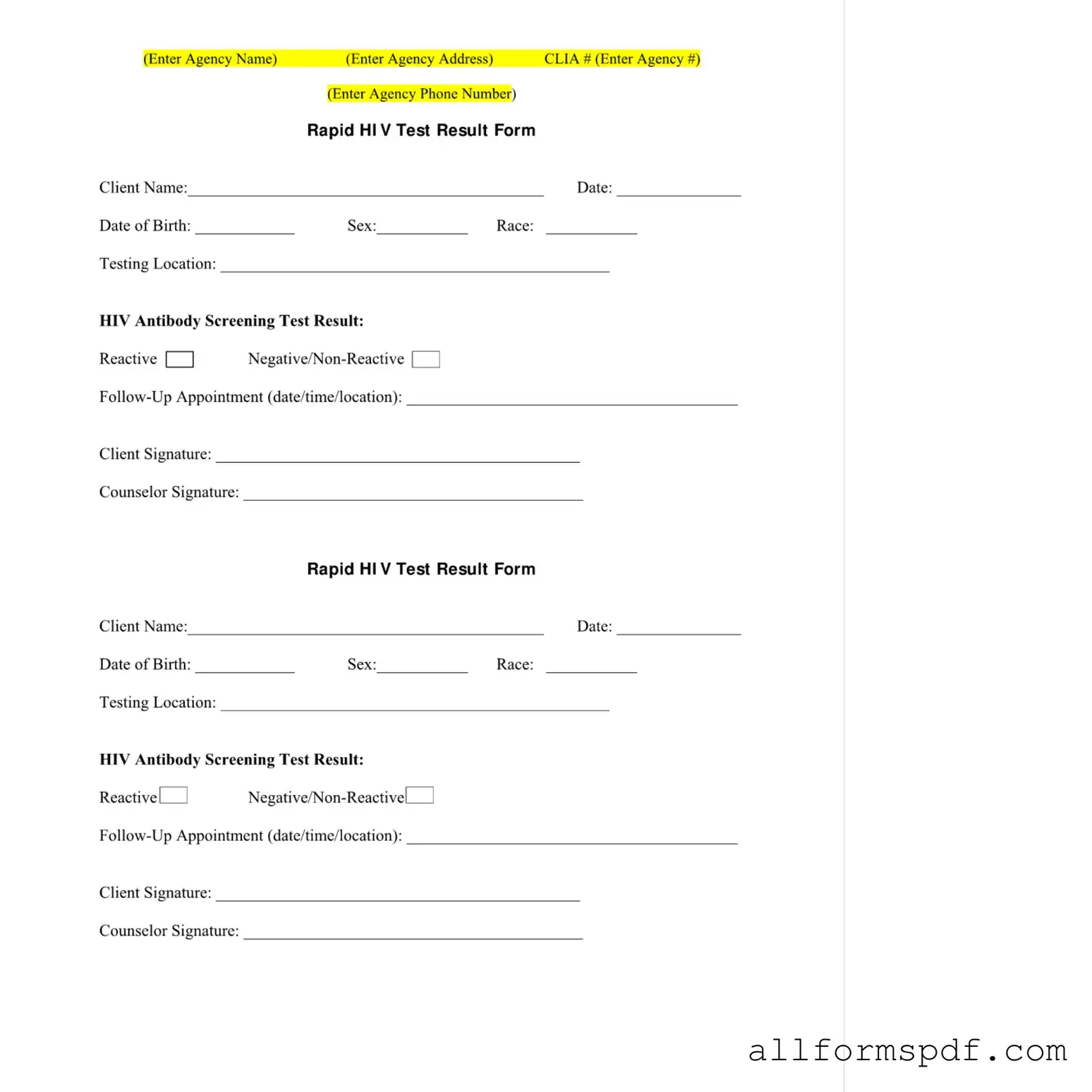Fill Out Your Negative Hiv Test Form
The Negative HIV Test form is an essential document used to record the results of an HIV antibody screening test. It captures vital client information, including personal details and test outcomes, ensuring proper follow-up and care. Understanding this form is crucial for both clients and healthcare providers in managing HIV testing and results effectively.
Create My Negative Hiv Test Now
